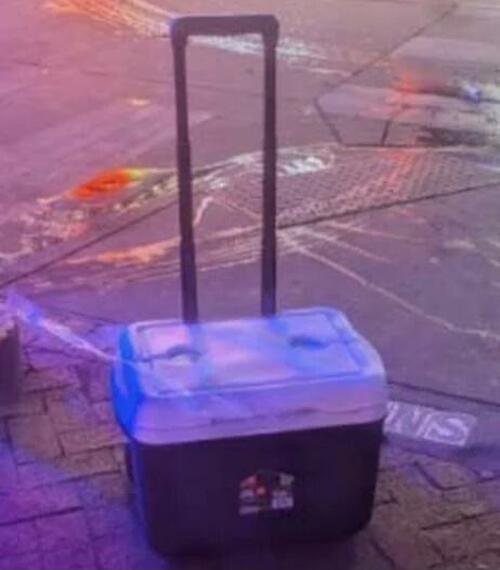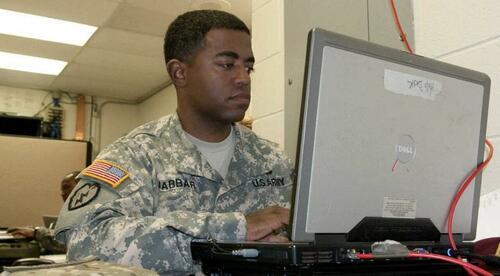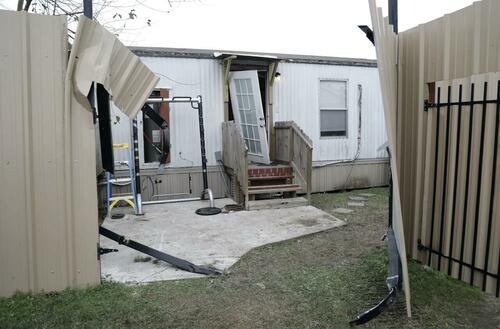Bourbon Street Terrorist’s Bombs Made With Extremely Rare Explosive, Officials Say
The terrorist who killed 14 people and hurt 35 more in New Orleans in the early hours of New Year’s Day prepositioned bombs that used an extraordinarily rare explosive compound, senior law enforcement officials have told NBC News. The two devices didn’t detonate, but authorities are scrambling to learn how Shamsud-Din Jabbar was able to incorporate a type of explosive that has never before been used in a terror attack in America or Europe.
At around 3 am on Wednesday, Texas-born Houston resident Shamsud-Din Jabbar used a pickup truck to plow a path of carnage through a crowd of New Year’s partiers on Bourbon Street, before police killed him in a shootout. The 42-year-old US Army veteran’s plan had another dimension of death that he failed to execute: The FBI and ATF say he’d built two bombs that were rigged to be detonated with a transmitter that was found in his rented Ford F-150 truck.
The improvised explosive devices were placed in recreational coolers that Jabbar placed on Bourbon Street; that action was recorded on security cameras. Neither bomb exploded, and investigators are still trying to determine whether that fortunate fact springs from a design flaw, a malfunction or Jabbar’s failing to attempt to trigger the devices.

The officials who told NBC News about the rare explosive apparently stopped short of naming it, but emphasized that it was the first time it had been used in the United States, and had likewise never been used by terrorists anywhere in Europe. Investigators are now trying to determine how Jabbar learned about the extraordinary compound and how he was able to manufacture it.
Given the particulars of his military service, it’s unlikely Jabbar’s novel bomb-making knowledge was gained during his time in uniform. “Jabbar was in the regular Army as a Human Resource Specialist (42A) and Information Technology (IT) Specialist (25B) from March 2007 until January 2015 and then in the Army Reserve as an IT Specialist (25B) from January 2015 until July 2020,” a Pentagon official told Task & Purpose. “He deployed to Afghanistan from February 2009 to January 2010. He held the rank of Staff Sergeant at the end of service.”

The pickup truck that Jabbar used to murder 14 people and wound dozens more was adorned with an ISIS flag. Law enforcement officials say that he posted videos to Facebook hours before his attack. Seemingly created for the benefit of his family, the videos showed him pledging allegiance to the Salafist terror group as he was driving. Remarkably, he said he’d considered attacking his family and friends, but rejected the idea out of concern that ensuing news coverage would fail to properly focus on the “war between the believers and the disbelievers.” After he was killed, police found he’d been armed with an AR-15 and a handgun.
Before launching his attack on innocent revelers, Jabbar set his short-term rental house ablaze, but “the fire burned to a point that it extinguished itself prior to spreading to other rooms,” federal investigators say. The arson stopped short despite Jabbar having apparently positioned accelerants throughout the house. The house on Mandeville Street in New Orleans held bomb-making materials and what police believe is a homemade rifle silencer. Similar bomb materials were found at Jabbar’s house on Crescent Peak Drive in Houston, in a predominantly Muslim neighborhood on the city’s north side.

In its Friday statement, the FBI said it had brought an additional 200 personnel to New Orleans to boost the investigation, noting the bureau had received nearly 1,000 tips and was evaluating “terabytes worth of video and other data collected by street cameras monitored by the New Orleans Real Time Crime Center.”
While the FBI earlier suspected that Jabbar had accomplices, the bureau now says otherwise. “We do not assess at this point that anyone else is involved in this attack other than Shamsud-Din Jabbar,” said Christopher Raia, deputy assistant director of the FBI’s counterintelligence division, on Thursday.
Jabbar’s younger brother, 24-year-old Abdur Jabbar, told the New York Times that his older brother’s mass murder wasn’t an exemplification of Islam. “What he did does not represent Islam. This is more some type of radicalization, not religion.”
Tyler Durden
Sun, 01/05/2025 – 08:45

